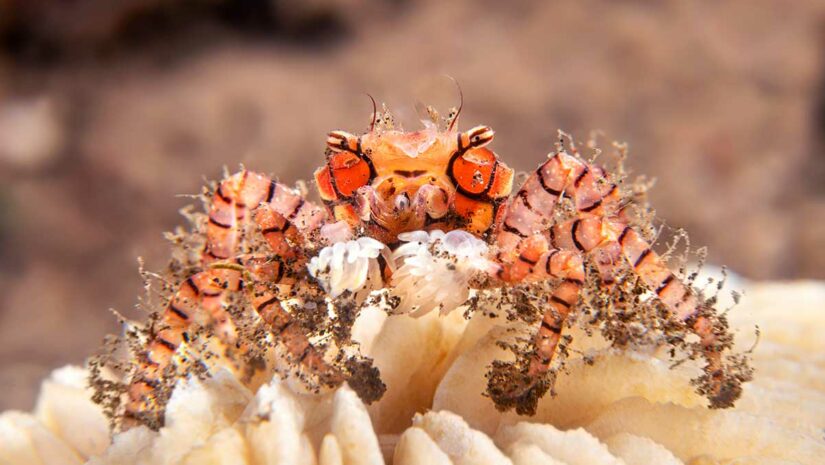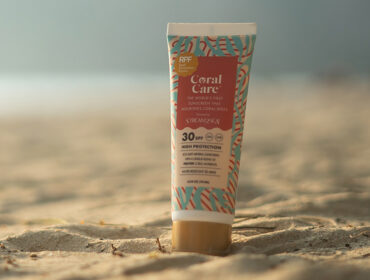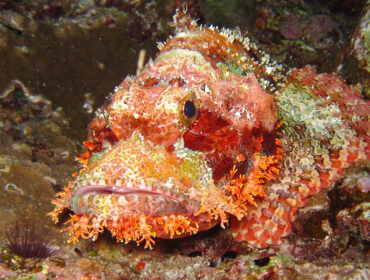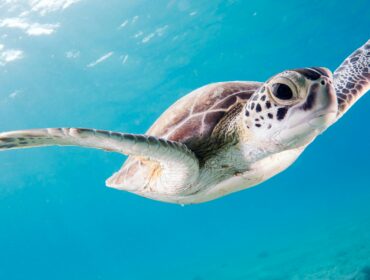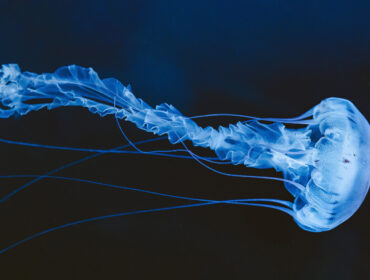A tiny and fierce creature, the pom pom crab, also known as a boxer crab, is ready for the fight. Armed with anemones and colored to blend in with its rocky, coral environment, this crustacean works symbiotically with its toxic invertebrate companions to hunt food and protect themselves. Pom poms have a short time on earth and are not fussy about food. They will eat anything that crosses their path, plant or meat and have kept their mating rituals a mystery to marine biologists. There is plenty to learn about these small, shallow dwelling crabs and how we can protect them.
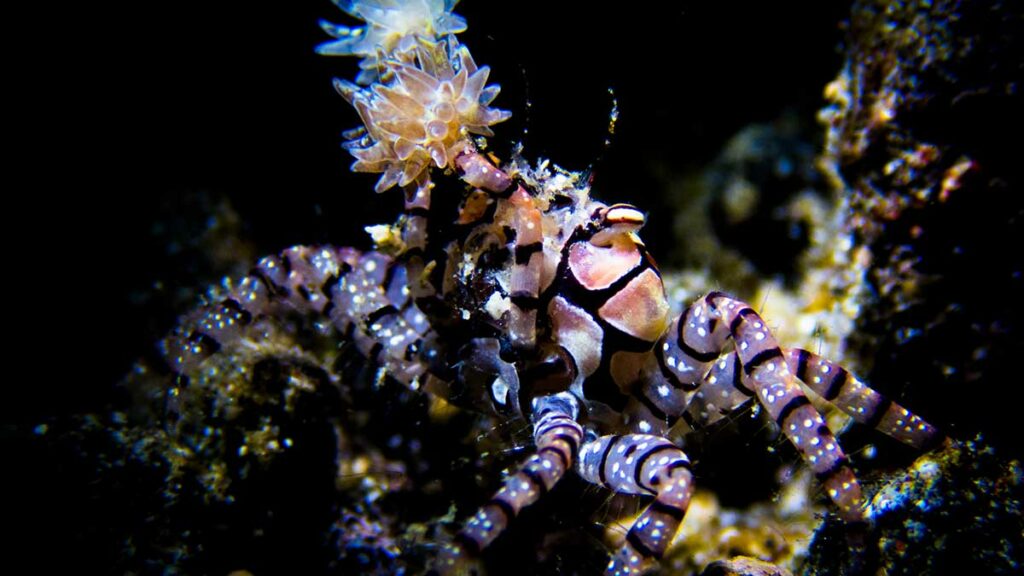
What is a pom pom crab?
A pom-pom crab, scientifically known as Lybia tessellata, is a captivating marine crustacean with distinct behavior. Found in tropical waters, it adorns its pincers with anemones resembling pom-poms, forming a symbiotic relationship. These anemones provide protection and food scraps to the crab, while the crab offers mobility and a constant supply of nutrients. The crab’s careful handling prevents the stinging tentacles of the anemones from harming it. This unique adaptation showcases nature’s ingenuity in creating intricate partnerships among seemingly disparate creatures, highlighting the interconnectedness and adaptability of life within the ocean’s diverse ecosystems.
Physical characteristics
While the pom-poms are definitely the most stand-out feature when spotting these crabs, the crabs are also very vibrantly colored. Their shell is made of armored orange and white panels, and their legs are pale opaque with brown markings that help it camouflage with rocks and coral. Shell patterns vary between species.
These small creatures which have an average width of one inch or 25 centimeters. These crabs are instantly recognizable when holding anemones in their claws. They use anemones to fight off predators and in exchange they make sure the anemones are well fed.
Habitat
Pom Pom crabs live in saltwater and prefer coral reefs and rocky environments which offer plenty of coverage and protection from predators. As they have a symbiotic relationship with sea anemones they need to be in a shared space so they can survive.
This species stays in shallow water no deeper than 66 feet or 20 meters. Sandy or gravelly sea beds offer a perfect fit for camouflaging these cheerleading crabs. The pom-pom crab has plentiful numbers in Hawaii but similar species live in the tropical Indo-Pacific waters. There is also a freshwater species of pom-pom crab that lives throughout Asia.
Behavior
These crabs are aquatic meaning they will spend their entire life underwater rather than venturing to the surface like some species. Given their size, in the wild they are likely to cautiously hide away as a defense mechanism. When it comes to other pom-pom crabs, some can show aggression including threatening legs and anemone extension. Some of this behavior is part of ritual interactions but those who do get into a scuffle will fight with their hind legs, keeping their pom poms out of the danger zone. Pom-Pom crabs will happily steal an anemone from another crab.
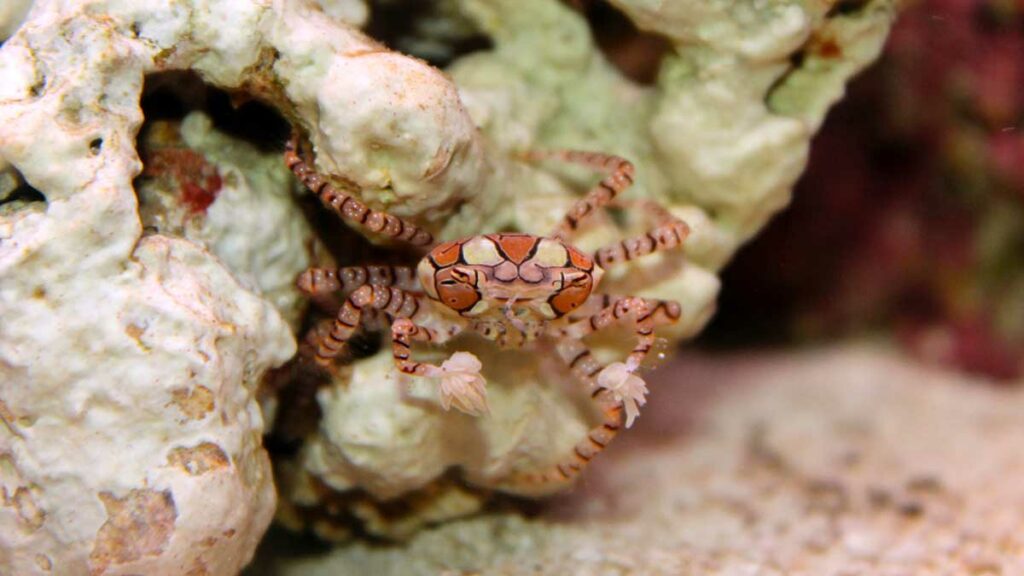
Diet
Pom-pom crabs are omnivores. They eat plants and other living creatures, but their preference is based on what is easily available. Their diet includes zooplankton, gastropods, small crustaceans, algae, and any other edible vegetation that might cross their path. Pom-pom crab claws are not very useful which is why they use anemones for protection and hunting. Anemones capture food in their tentacles which crabs can consume, alternatively the venom from the anemones can be used to sting prey which the crab will then consume. They can also use their front legs to help capture a meal.
Life span
The exact life expectancy of pom-pom crabs has not been confirmed. In captivity, they usually live for a year but it is believed in the wild they can live for up to five years or more. Female crabs carry their fertilized red eggs on their abdomen while they mature. By keeping the eggs close, she can protect her offspring until they are released in a hidden and safe space. This can take up to 15 days. Little is known about the mating ritual or maturing process of this species but pom pom crabs have never been successfully bred in captivity.
Predators
Pom-pom crabs have thin shells and while they can use their anemones to try to ward off predators, some bigger fish will be unfazed by this threat. Staying hidden by relying on camouflage and crawling into small spaces in the sea rocks and among coral is their best defense. In the waters surrounding the Hawaiian reef, green jobfish, bluefin trevally, and giant trevally are all prominent predators to reef dwelling crabs. Smaller fish such as gobies and zebra morays also pose a risk to small crustaceans. Pom pom crab can even fight off a pufferfish with its anemones.
Symbiotic Relationship with Anemones
Pom pom crabs have a lot to thank anemones for, least of all for their name. The anemones carried by the crab look like cheerleader pom poms or boxing gloves. The crab and sea anemones live in a symbiotic relationship, while the protective benefits are essential for the pom pom crab. The anemone uses its tentacles to catch prey, which both the crab and the anemone can consume.
Anemones can also asexually reproduce. If a crab loses one of their anemones they can split it in half and it will develop into a full anemone.
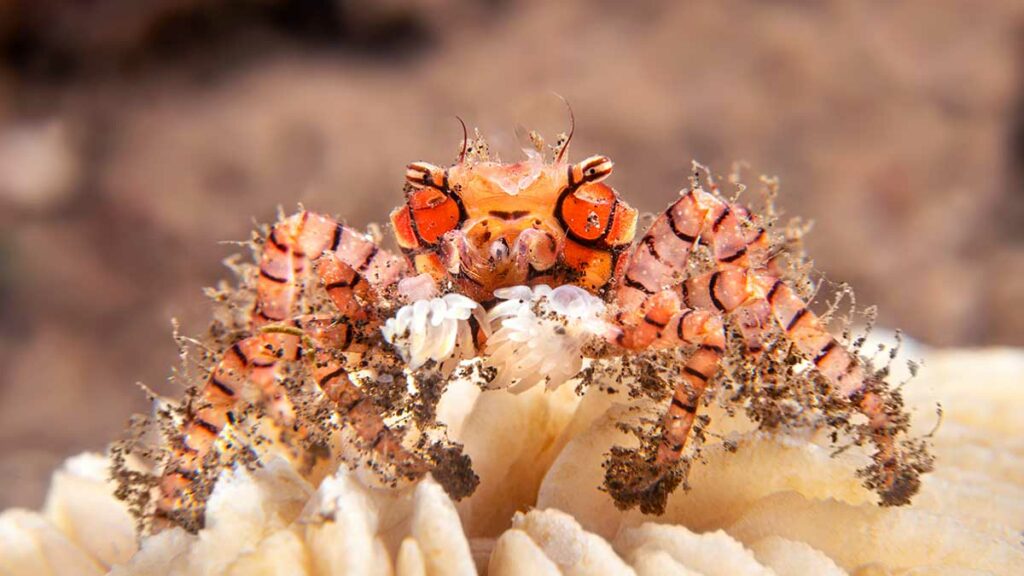
Conservation Challenges and Efforts
Rapid climate change caused by human activity has a continuing negative effect on our planet. The waters in which pom pom crabs spend their lives are not immune to this, with temperatures increasing yearly. The swift melting of polar ice is also leading to rising sea levels, which consequently can plunge shallow dwelling creatures like the pom pom crab into deep water.
One of the most direct risks to marine life such as crabs is the destruction of their habitat, often caused by overfishing and irresponsible tourism. Raising awareness of this damaging behavior and putting restorative action into place to repair and support habitats are essential for the conservation of pom pom crabs.
Conclusion
By working with neighboring marine life, this intelligent crab species has ensured it can survive even with a weak shell and lacking claws. If you watch with a careful eye, there is an opportunity to spot these tiny pom pom wielding crustaceans hiding in plain sight in the tropical pacific waters.

